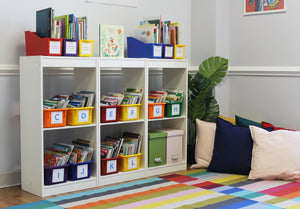Four Questions that Must be Answered to Design a Top-Notch Dual Language Program
I have been creating and improving dual language programs for nearly fifteen years, first as a founding teacher and now as a dual language consultant. In this time, I’ve worked in six languages with more than 40 programs, and across five states. Some programs have worked very well right from the start. Others never really recovered from a flawed design. Witnessing both successes and failures has taught me that creating a dual language program is not about following a so-called “model.” Instead, it’s about knowing how to commit for the long term. Successful programs are able to answer “yes” to these four questions quickly and confidently.
 1. Keep the Biliteracy Promise
1. Keep the Biliteracy Promise
Well articulated dual language immersion programs know that the hardest promise to keep is the promise that students will be biliterate by the time they graduate from the program. Teachers and administrators of strong programs carefully tune their clocks to include five literacy components: the Three Fundamentals and the Workshops. Teachers who know me well know that I cannot stand the term “literacy block.” That’s because I believe in clearly acknowledging the power and purpose of each of the five components.
The Three Fundamentals
The Three Fundamentals are Read Aloud, Word Work and Shared Reading. Each of those components must be taught starting in kindergarten in both languages. The wheel below demonstrates the intended use of each. During all Three Fundamentals, the teacher teaches the whole class and provides a very high level of support, both in terms of comprehensible input and scaffolding.

The Reading and Writing Workshops
The Reading and Writing Workshops make up the fourth and fifth literacy components. I separate these components from the Three Fundamentals because depending on the student population’s linguistic strengths, these workshops should be taught in English only the first two years, in the language other than English, or in both languages. The Reading and Writing Workshops release a greater level of responsibility to the students than the Three Fundamentals. They call for the students to be able to read and write with some level of fluency, and therefore, exercise their linguistic independence.

2. Build Your Biliteracy Backbone
I call a well-defined schedule your “Biliteracy Backbone.” Your schedule should be very detailed, and different for early grades and upper grades. Over time, students will gain more proficiency and need more time to complete complex work. In my Dual Language Immersion 101 webinar, I show six examples of strong schedules that will support many different school profiles. I teach administrators and teachers to identify their students’ strengths so that schools can begin with a sound starting point for their Biliteracy Backbone.
I know many of you will say “It’s just good teaching.” I hear that all of the time. In dual language immersion, however, this isn’t just good teaching. A strong Biliteracy Backbone is the only way to sustain a program and commit for the long-term.
I’m really excited to announce that this year I’m making my Dual Language Immersion 101 presentation available in a live webinar format. One of the upsides of being forced to work from home for the past year is that I’ve found ways to reach programs in Illinois, New York, Georgia, Alaska and California without leaving my desk. With the help of my amazing team, I’m now able to deliver a unique, live webinar to schools all across the country.
I strongly recommend that district and building leaders attend this workshop before signing up the rest of their staff. It is a chance for programs in their planning year to think carefully and plan strategically for the year ahead. It’s also a chance for struggling programs to rethink their design and fix inherent issues. I’m making this a live webinar because I want to keep the floor open to program-specific questions. Please check the webinar calendar for a list of dates.
I really look forward to seeing you at the webinar!
marie



Leave a comment